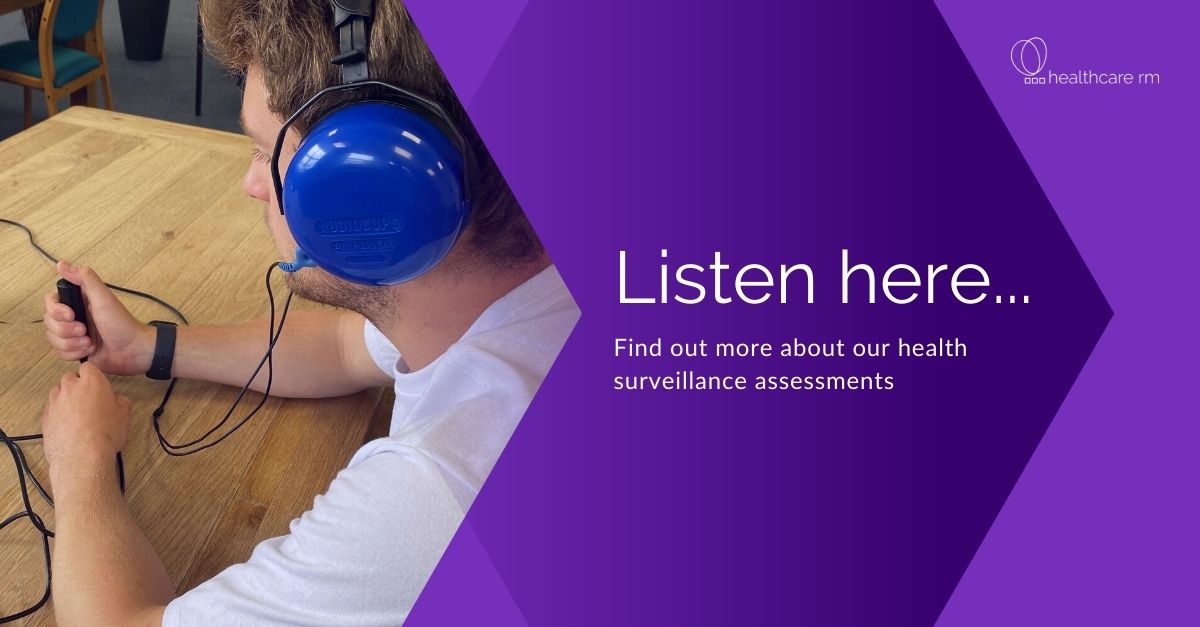
Listen here…
For those individuals who are exposed to noise in the workplace (85dB or above), it is essential that regular Health Surveillance and Audiometry screening is carried out as part of Health and Safety legislation. This is to make sure that people do not suffer damage to their hearing.
Following the Control of Noise Regulations 2005, it is recommended that employers look for alternative processes, equipment or working methods which would reduce noise exposure, where reasonably practicable. This could include such methods as PPE i.e., mandatory use of hearing protection or investing in new, quieter machinery or equipment.
The hearing test would normally take place in a controlled environment (a sound-proof booth or quiet room) and assesses an individual’s hearing level in both ears, with the left ear being tested first followed by the right. The test is performed using an audiometer. Once the test has been completed, the Technician would explain the results, where a Category is presented which dictates the level of hearing achieved. These range from Category 1 to 4 and are based on the individuals age. For example, an employee who has ‘normal’ hearing for their age will be labelled at Category 1. If an employee has significant hearing loss in relation to their age then this could be a Category 3. An onward referral to a GP or specialist would be made if any abnormal hearing loss is identified. A fitness for work notification, or Certificate of Fitness is also provided to the business which should be kept safely and securely in order to comply with Health and Safety Regulations.
Ideally, it would be beneficial to begin screening an employees baseline hearing level before any exposure to noise and monitor them going forwards. However, it can be carried out at any time for those employees working in noisy environments. Audiometry screening is usually annual for the first two years of employment and then at three-yearly intervals.
After Audiometry screening, it is also possible to gather the results and identify any patterns in the data. For example, there may be a certain department or area of the site where employees’ hearing levels are down compared to others. A report could be generated and sent to the organisation to help them control the noise levels present.
If you would like to find out more about Audiometry assessments or any of our other health surveillance assessments, contact us.

.jpg)





